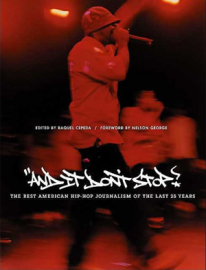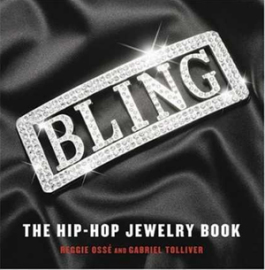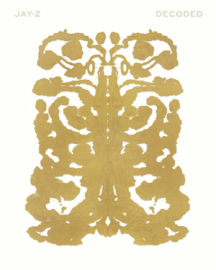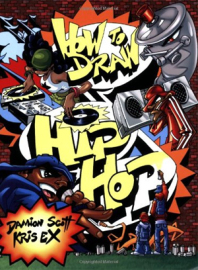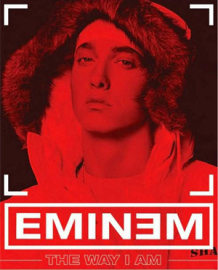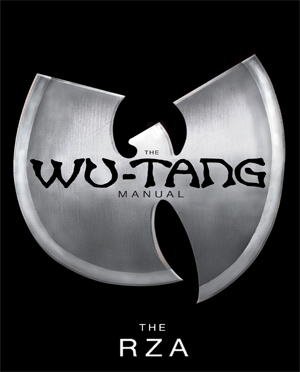Hip Hop is 50
On August 11, 1973 in South Bronx, New-York a party took place which is considered to be the first Hip-Hop jam in History. The venue, recreation room of an apartment building at 1520 Sedgwick Avenue , is now regarded as the birthplace of Hip-Hop and the person who organized the party - the godfather of this culture.
-
On August 11, 1973 in South Bronx, New-York a party took place which is considered to be the first Hip-Hop jam in History. The venue, recreation room of an apartment building at 1520 Sedgwick Avenue , is now regarded as the birthplace of Hip-Hop and the person who organized the party - the godfather of this culture.
-
Well-known DJ Kool Herc was a Jamaican immigrant who settled with his family in South Bronx in early 70's. He became famous for being the first person to mix popular music among Afro and Latino communities in such a way that the most noticeable and energetic parts were played whereas less energetic moments simply got cut out. On top of that, he put certain parts, such as breaks, on repeat by putting the needles from the end to the beginning. He called this trick "Merry Go Round". Back then such style was an absolute revolution and it became the origin of a new musical genre. -
Kool Herc is also one of the first MCs in Hip-Hop. In his sets he used the mic and encouraged the audience to raise their voices by making jokes and fooling around. It was especially well-timed when he put the needle from the end of the vinyl to the beginning. -
Kool Herc's parties were gaining in popularity and proved to be the coolest jams in Bronx. As a result there was not enough room in the recreation room, so Herc started throwing jams in the street. It started bringing together the Latino and Afro-American communities which were not exactly on friendly terms at that time. -
DJ is the person who lays the foundation for everything in Hip-Hop. Music has always been the main inspiring force of any youth subculture. When music changes the dance changes with it. This was the case with Herc. His mixes of break parts, i.e. song portions where the vocals and all the instruments except for the drums and possibly bass are silent, laid the ground for the birth of a new dance. The break means "pause", i.e. the moment of the song without the actual song. In pop music the break is an instrumental or a percussion section with a song. Such a break is usually placed within the sections of the song to provide the feeling of anticipation and signal the beginning of a new section or create diversity in the song structure. In that way the thing which was considered the most unimportant part of the music was used by the founding fathers of Hip-Hop as the primary source for creation of a whole new genre in music. -
The "Merry Go Round" style of playing or as it later was called Break-Beat was defined by growing vitality and called for a separate dance. In the most energetic moments of the song the moves of the dancers become more energetic as well. Almost in every dance, especially in the community kinds of dance, there is a moment of the explosion of energy when the dancer goes down, gets on his hands and starts doing acrobatic tricks. Usually this moments do not take long since they demand certain level of sportsmanship and they are limited by the music. But now the music part is longer, so the energy explosion moment becomes longer as well. When Herc played his breaks on repeat on the dance floor the cyphers were formed by b-boys (break boys) who were waiting for this exact moment. Thus a new dance movement started its development.
-
The term b-boy (break-boy) was introduced by Kool Herc himself and it means a guy who is doing something out of the ordinary. This is the way this new dance could be described - out of the ordinary.
Therefore at Kool Herc's parties the groundwork was laid for the future Hip-Hop culture, and the starting point of all this was that first party on August 11, 1973. It was the root, the origin but it is still not entirely valid to regard this date as the birthday of Hip-Hop. At that time such trends could be seen all over Bronx as well as beyond it. People threw parties, experimented with vinyl, made rhymes in the mic - such trends could be noticed anywhere , they were flowing in the air as well as in people's -
minds. However, Kool Herc's parties were the most crowded and revolutionary but it still was not called Hip-Hop. It did not even look like a new subculture, it was just a discotheque. The people who spent time there could not even imagine that someday this would evolve into something this massive and colossal.
More defining features, cultural form and organized nature of this movement were introduced by the organization called "Zulu Nation" headed by another godfather of Hip-Hop Afrika Bambaataa. Their goal was to bring together the communities of South Bronx and other poor districts of New-York which were divided by crime and drug addiction. They tried to redirect the energy of the young generation from the negative to the positive and transform their urge to destroy into the urge to create. The Zulu organization attempted to form a general trend of development of this organized subculture using the most popular trends of the time, namely DJing, MCing, B-boying and Graffiti. In truth, Zulu Nation was massive and mature enough in comparison with other youth cultures. Zulu had a plan and resources. Their jams became the most crowded and their motto was "Peace, unity, love and having fun". They called the new movement "Hip-Hop" and propagated it through four active elements - DJing, MCing, B-boying and Graffiti. -
November 12, 1973 is considered to be the day of Zulu Nation formation and November 12, 1974 - the day of formation of Hip-Hop culture as an organized movement. -
